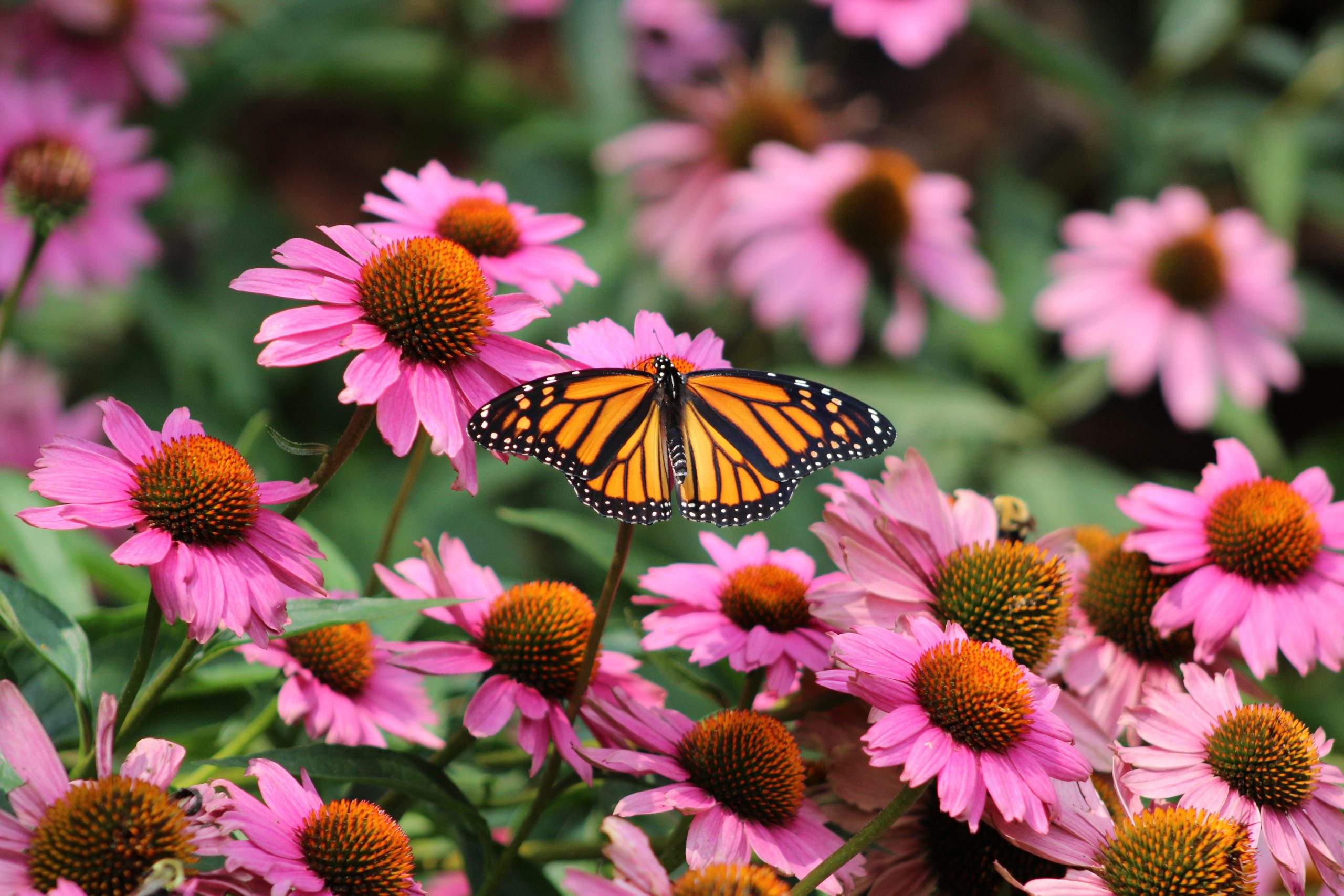Pollinator Plants
If you are interested in gardening and plants in general, you have probably heard all the hype about pollinator plants. This trend is here to stay and for good reason. Pollinators are things that deliver pollen from the stamen (male part of the flower) to the stigma (female part of the flower). Some plants self-pollinate. Some pollination occurs because of natural weather occurrences (rain and wind). Most pollination is done by insects and animals. Insects and animals land on the plant in search of food and shelter and then carry the pollen to other plants. Bees, butterflies, and hummingbirds are the top pollinators.
Why is pollination important?
According to the USDA, nearly 80% of worldwide crops and nearly all food crops require pollination by animals. They have estimated that crops dependent on pollination are worth more than $10 billion per year. Our environment relies on pollination for creating breathable oxygen and cleansing water. Flowering plants act as a purifier for our water. The roots also protect our shores from erosion. Pollinators assist in these environmental cycles by assisting with the reproduction of the plants. Over the last several years the bee population has decreased tremendously. This is due to overuse of chemicals, development of land for commercial and residential use (cutting down natural plants), and climate change.
Native plants and pollinators
Native plants are plants that naturally grow in an environment without help from humans. These pollinators have thrived from these plants and they provide the nutrients the pollinators need. When foreign plants are transplanted by us to an environment, they normally do not provide what pollinators need to survive and are sometimes even harmful to pollinators. Native plants include more than flowering plants. They also include shrubs, trees, and grasses.
How to create landscaping for pollinators
You must think about food, shelter, and water when planning your landscaping. Foods for pollinators include flowers and fruit, as well as some herbs. Some good choices include garlic, parsley, and oregano. There should be a freshwater supply nearby but safely made for pollinators, so they do not drown. Pollinators need shelter from weather and predators. Including more plants and shrubs nearby for them to hide is a good idea. There should be enough shade and sunlight for the various pollinator plants.
Which plants are the best pollinators for Indiana?
Finally, what you have been waiting for! Some of the best pollinators that are native to Indiana include:
Some of Our Favorites Pollinators for Indiana
- Butterfly Weed
- Swamp Milkweed
- Wild bergamot, bee balm
- Scarlet Salvia
- Purple Coneflower
- Sweet Joy Pye Weed
- Trumpet Creeper
Hope Grows can help you choose the plants that will thrive in your environment. Choosing plants can be difficult. We will help you choose the best plants for your yard considering the amount of sun and shade present as well as the space configuration. Let’s make your yard a pollinator habitat!
*For a full list of Indiana Pollinators visit https://extension.entm.purdue.edu/publications/POL-6/POL-6.pdf
*For a full list of Indiana native plants visit https://www.in.gov/dnr/nature-preserves/files/np-LandscapingNativePlantsBrochure.pdf

